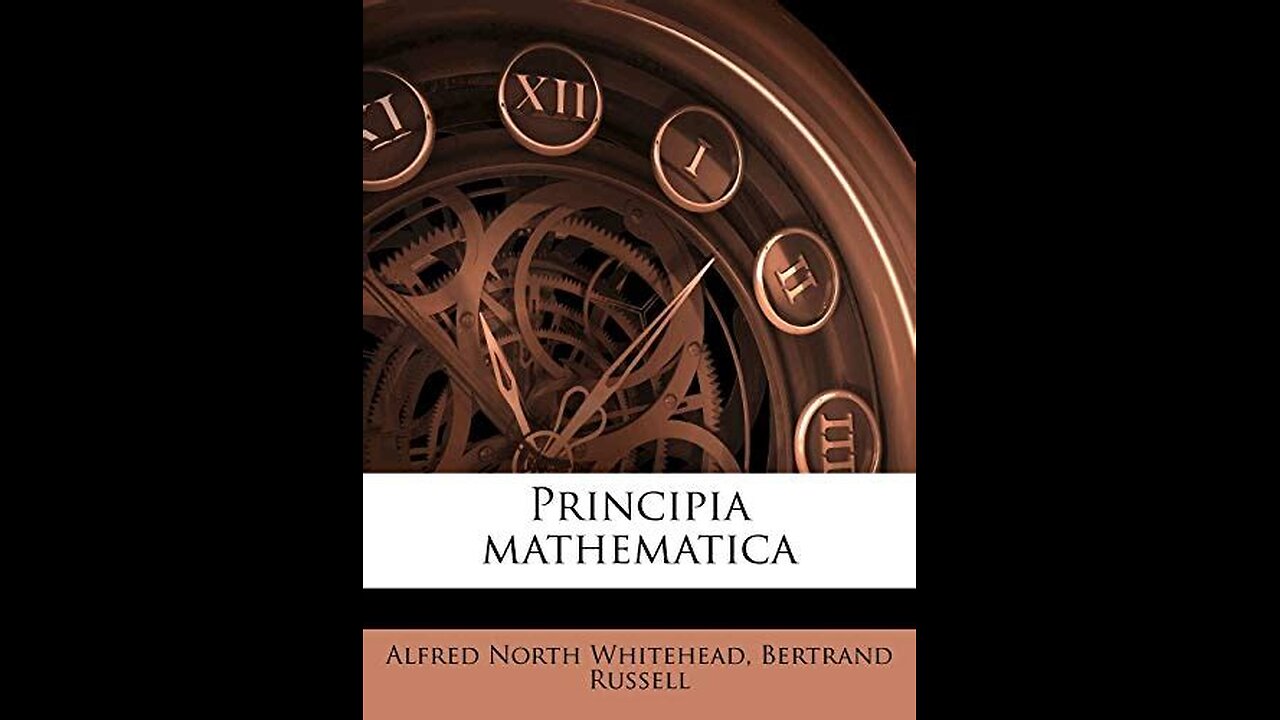Premium Only Content

Principia Mathematica by Alfred North Whitehead and Bertrand Russell | Summary
Buy Here: https://amzn.to/3R7em1j
""Principia Mathematica,"" written by Alfred North Whitehead and Bertrand Russell, is a monumental three-volume work that sought to provide a rigorous foundation for mathematics through the development of symbolic logic. The project was initiated in 1910, and the final volume was published in 1913. Here is a summary of the key themes and contributions of ""Principia Mathematica"":
1. Logical Foundations of Mathematics:
The primary goal of ""Principia Mathematica"" was to establish a logical foundation for mathematics. Whitehead and Russell aimed to reduce all mathematical propositions to the basic principles of formal logic. They developed a complex system of symbolic logic to achieve this ambitious goal.
2. Axiomatic System:
""Principia Mathematica"" is built upon an elaborate axiomatic system. The authors painstakingly developed a set of axioms and inference rules to derive the entire edifice of mathematics. This systematic approach was intended to eliminate ambiguity and provide a solid, logical foundation.
3. Propositional and Predicate Logic:
The authors introduced and developed both propositional logic and predicate logic, providing a formal language for expressing mathematical statements. This language allowed them to precisely articulate mathematical concepts and proofs.
4. Theory of Types:
To address the logical paradoxes that had plagued earlier attempts at foundational work, Whitehead and Russell introduced the theory of types. This involved a hierarchy of types, with each mathematical object assigned a specific type. This innovation was crucial for avoiding self-referential paradoxes.
5. Development of Arithmetic:
The first volume of ""Principia Mathematica"" focuses on the development of arithmetic. The authors aimed to demonstrate how the entire structure of mathematics, including number theory, could be derived from logical principles.
6. Set Theory and Cardinal Numbers:
The second volume extends the foundational work to set theory and cardinal numbers. Whitehead and Russell explored the concepts of classes and relations, laying the groundwork for more advanced mathematical structures.
7. Analysis and Geometry:
The third volume addresses the foundations of analysis and geometry. The authors aimed to show how concepts like continuity and differentiation could be logically derived within their formal system.
8. Influence and Impact:
While ""Principia Mathematica"" did not fully achieve its goal of providing an entirely self-contained foundation for all of mathematics, it had a profound impact on the philosophy of mathematics and influenced subsequent developments in logic and the foundations of mathematics.
In summary, ""Principia Mathematica"" is a monumental work that attempted to establish a logical foundation for all of mathematics. While it did not fully realize its lofty objectives, it remains a landmark in the history of mathematical philosophy and symbolic logic, influencing generations of mathematicians and logicians."
-
 44:13
44:13
The White House
5 hours agoPresident Trump Meets with the White House Task Force on the FIFA World Cup 2026
18.6K15 -
 1:13:17
1:13:17
TheSaltyCracker
2 hours agoSALTcast 11-17-25
31.9K70 -
 1:17:45
1:17:45
DeVory Darkins
4 hours agoTrump drops STUNNING update as Chicago gets exposed for fraud
126K47 -
 LIVE
LIVE
Dr Disrespect
6 hours ago🔴LIVE - DR DISRESPECT - ARC RAIDERS - STELLA MONTIS QUESTS
2,109 watching -
 1:05:46
1:05:46
Jeff Ahern
2 hours ago $1.09 earnedMonday Madness with Jeff Ahern
17K6 -
 1:21:49
1:21:49
Sean Unpaved
4 hours agoJa'Marr Chase LIED About Spitting On Jalen Ramsey! | UNPAVED
32.1K2 -
 2:17:54
2:17:54
Side Scrollers Podcast
6 hours agoAsmongold vs DSP + Metroid Prime 4 CONTROVERSY + Disney DROPS DEI? + More | Side Scrollers
42.3K6 -
 41:53
41:53
Steven Crowder
7 hours agoEnd All SNAP Benefits | Change My Mind
441K617 -
 LIVE
LIVE
StoneMountain64
3 hours agoBlack Ops 7 ZOMBIES 1st Playthrough of the BIGGEST MAP EVER
72 watching -
 LIVE
LIVE
FusedAegisTV
19 hours agoFUSEDAEGIS | This is Going to Take GOTY | Expedition 33 PART II
43 watching